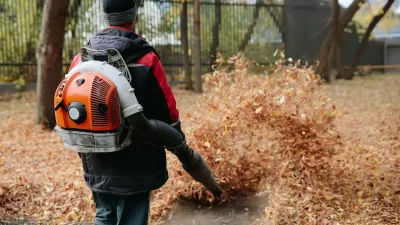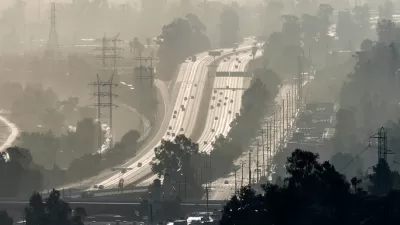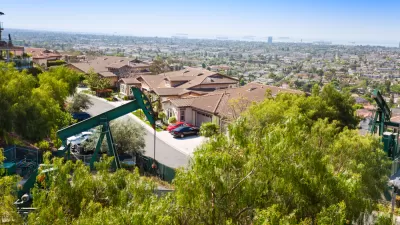The reforestation of Detroit has become a problem for allergy and asthma sufferers in the area.

In 1950 an estimated 1.8 million people lived in Detroit; today that number is closer to 700,000. The land left behind has created an opportunity for plants to reclaim space. "Plants and weeds grow with abandon in the newly exposed soils, and, during their growing seasons, those plants release their pollen loads into the air and into Detroiters’ airways," Lucas Joel writes for Undark Magazine.
Pollen can be an irritant for allergy sufferers and it can worsen asthma attacks. "Detroit currently ranks in the top 10 cities in the U.S. for asthma-related deaths, and a 2016 report revealed that 43.2 percent of asthma-afflicted children who were enrolled in Medicaid in the city had one or more emergency room visits per year for asthma, while the same figure for children in the rest of Michigan stood at 27.5 percent," reports Joel. While the issue of public health involves more than the presence of pollen, pollen is a factor. To make matters worse, it’s difficult to track how much pollen circulates in the area. The only pollen counter is located outside the center of the city, and what’s more, experts believe that pollen counts vary even at the neighborhood level.
Daniel Katz at the University of Michigan School of Public Health is trying to get to the bottom the question of where the pollen is with measuring devices. Katz hopes that mapping the type and volume of pollen around the city can help better inform officials and allergy sufferers as to where the pollen is and how to deal with it.
FULL STORY: As the Forest Moves Back in, Pollen Is on the Rise in Detroit

Study: Maui’s Plan to Convert Vacation Rentals to Long-Term Housing Could Cause Nearly $1 Billion Economic Loss
The plan would reduce visitor accommodation by 25,% resulting in 1,900 jobs lost.

North Texas Transit Leaders Tout Benefits of TOD for Growing Region
At a summit focused on transit-oriented development, policymakers discussed how North Texas’ expanded light rail system can serve as a tool for economic growth.

Using Old Oil and Gas Wells for Green Energy Storage
Penn State researchers have found that repurposing abandoned oil and gas wells for geothermal-assisted compressed-air energy storage can boost efficiency, reduce environmental risks, and support clean energy and job transitions.

Santa Barbara Could Build Housing on County Land
County supervisors moved forward a proposal to build workforce housing on two county-owned parcels.

San Mateo Formally Opposes Freeway Project
The city council will send a letter to Caltrans urging the agency to reconsider a plan to expand the 101 through the city of San Mateo.

A Bronx Community Fights to Have its Voice Heard
After organizing and giving input for decades, the community around the Kingsbridge Armory might actually see it redeveloped — and they want to continue to have a say in how it goes.
Urban Design for Planners 1: Software Tools
This six-course series explores essential urban design concepts using open source software and equips planners with the tools they need to participate fully in the urban design process.
Planning for Universal Design
Learn the tools for implementing Universal Design in planning regulations.
Ascent Environmental
Borough of Carlisle
Institute for Housing and Urban Development Studies (IHS)
City of Grandview
Harvard GSD Executive Education
Toledo-Lucas County Plan Commissions
Salt Lake City
NYU Wagner Graduate School of Public Service





























